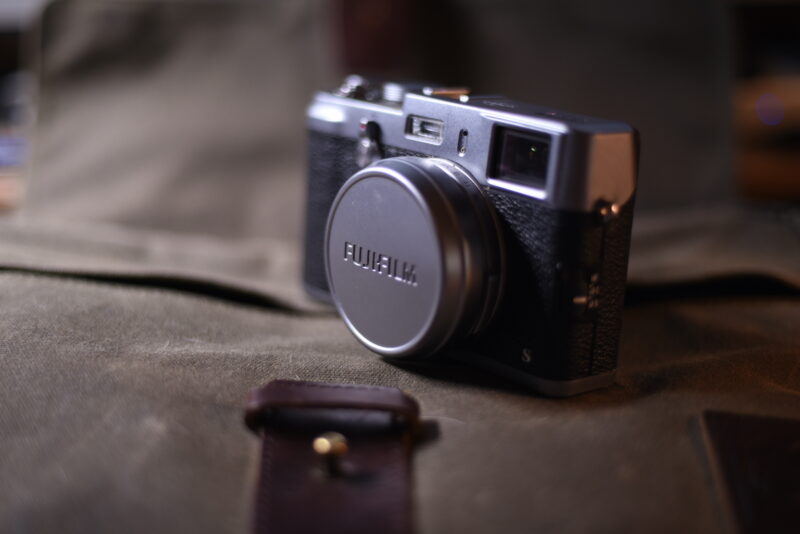
I bought a Fujifilm X100S “point-and-shoot” camera a few years. There was a lot of buzz about the X100V (two generations later than mine) at the time, but I did not want to buy new technology if I was not going to use it. I needed some experience with this type of camera.
So I bought a camera a couple of generations older at a lower price. I wanted to get a sense of how it worked and whether it would make images that I like. In part, it had to fit my approach to photography.
I am not a professional photographer. I am a dedicated amateur and make captures that interest me in some way. The subject has to be visually appealing, either because of geometry, or contrast, or even the nature of the subject.
I shot the X100S for a while and then got distracted by other things. One of those was amateur radio. I jumped into that hobby with both feet and my wallet. Hah!
But then work picked up (a lot) and I do not have time to go out in the field and spend several hours setting up a station and playing radio. I need to keep after the project work to meet my deadlines. Now, I know this will not last forever and I will find myself in a period of lighter workload. But, in the meantime, I noted (and have written in this weblog) that I need things in my life that nourish my soul. And so I picked up my cameras again because I can carry a camera when I am out doing something else and spend a few minutes working a subject that I encounter.
So, reenter the Fuji X100S. It is a relatively1 simple camera in the classic rangefinder style. It is reminiscent of the Leica rangefinders that some of the best street photographers used way back before I was a kid. It has a fixed focal length lens that is equivalent to a 35mm focal length (in a full frame camera). The lens is good and fast (f/2). It is sharp enough wide open. The sensor is excellent, even given it is several generations old.
The X100S lacks a couple of things I would really like to have. One is the upgraded sensor. The second is WiFi so I can transfer images directly to my iPhone (for obvious reasons).
However, the X100V is impossible to find. As a result, used cameras sell for several hundred bucks over new price! That is just crazy.
I called the shop where I bought my Fuji X-T5 and asked my salesman about this. His response was “It’s a social media thing. But you don’t want one of those. It will feel plasticky compared to your X-T5.”
He did not know I have an X100S so I have a good idea what the feel is like. It is not at all plasticky. It is a different camera than the X-T5 with a different use case. That is a use case that works me when I do not want to carry a complete kit, but want something better than my iPhone2.
Well, they just lost me as a customer. I do not know why a salesman would say such a thing about a solid piece of equipment.
Fuji Rumors indicates that the announcement of the X100V successor is about a year out. It will probably be nearly two years before we see a new camera. So, I will watch and wait for an X100V to come available at a reasonable price. I decided that I want the upgrade.
Update: I put in a Gixen snipe on a X100V that I won. It has one small ding on the top cap. That does not matter to me; I do not need a perfect camera, particularly one that will be carried in the field. I had to pay more than list for it, but not a king’s ransom, as a friend put it. It is now in my inventory and I am learning to use it.
There will be more about the X100V later. It is quite an evolution from the X100S.
1Simple is a relative term, particularly as applied the the X100 cameras. They can be set to be a point-and-shoot camera by turning all the dials to A and then, well, pointing and shooting. The cameras automation is quite capable. A more knowledgeable photographer will operate the camera by choosing which parts to automate and which to control. That is definitely not simple.
2I know that my iPhone 13 Pro Max has a sophisticated camera. And it does very well for the appropriate use case. But its control over depth of field is limited. And it does not handle like a real camera. I still use it, but there are times I want a real camera.